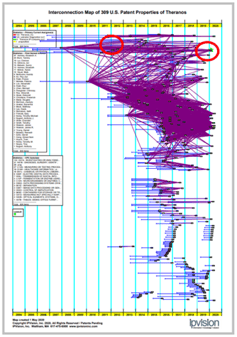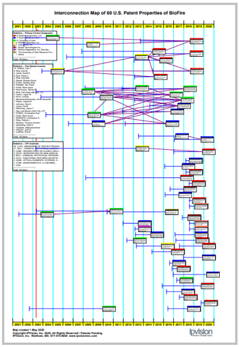
As our previous several articles have highlighted, there is no shortage of innovation taking place during this pandemic. Scientists the world over scramble for answers to very specific and unique pain points, which leads to solutions that might, at least for the moment, infringe upon intellectual property currently patented.
In the short term, several technology companies have committed to freeing up access to their intellectual property to fast-track potential treatments, vaccines, cures, and other tools necessary to combat the novel coronavirus. These companies, which include Amazon, Facebook, Microsoft, Sandia National Laboratories, IBM, Hewlett Packard, and many others, have agreed to refrain from enforcing patent protections through free and temporary licensing of their technology to universities, companies, and other researchers.
Laudable as it may be for these companies to provide access to their technology in the race for tests and treatments, their generosity doesn’t solve every potential problem that could arise from potential infringement. As difficult as it might be to believe that some might take advantage of the current situation to litigate technology used in research and development during this time, some already have.
Labrador Diagnostics, LLC, an affiliate of Fortress Investment Group, which is owned by SoftBank, sued BioFire, a company that makes and distributes COVID-19 tests asserting 2 patents (US Patents 8,283,155 and 10,533,994)from a portfolio of patents they acquired from the failed blood testing company Theranos. These 2 patents are circled in red on the patent portfolio interconnection map shown below. The BioFire U.S. Portfolio Map is shown on the right below.
|
Theranos U.S. Patent Portfolio Map |
BioFire U.S. Patent Portfolio Map |
 |
 |
|
Click images for interactive map |
|
While Labrador Diagnostics has since agreed to open its patents with royalty-free licensing to keep those tests in production and distribution, it’s galling to believe they—or anyone else—might attempt to stop anyone from developing life-saving technology.
Fortunately, there exists a law that allows the federal government to authorize use of any invention “described in and covered by a patent in the United States,” especially in situations where public safety is concerned. Essentially, patent owners must sue the United States for the use of that technology rather than the private entity—and then, only for reasonable compensation.
Now, there might have been a word used in the first few paragraphs here that made you give pause. These tech giants are granting “temporary” access to their intellectual property. What happens to that technology once the temporary licensing period ends? Are there actions researchers could take now to protect themselves, identify potentially useful technology, and emerge after the pandemic with their own intellectual property?
Make or Buy Technology?
When these researchers develop or acquire new technology, they’re working to save lives. Having a higher purpose doesn’t mean that maintaining market share isn’t also important—at least at some point in the process.
The purchase of another company for the purpose of acquiring the patent portfolio can serve several purposes, but the two more common reasons are these: to develop an aggressive offense strategy, in which the company purchased would have become (or already were) disruptive competitors; or as a foundation for growth through new technology built upon the products purchased along with the company.
Licensing patents or buying competing companies to pursue similar products can help save a lot of time—and time is definitely of the essence—but what about when those temporary licenses expire?
Identifying space within the current technology landscape for innovation doesn’t have to be difficult. However, because the first inclination is to race to the market, you could miss important information about the technology that already exists. You may not even be aware of the many patents your company already owns and the applications of that IP.
That’s where we come in. IPVision will help you navigate the patent landscape to identify potential acquisitions or space where your company can innovate without infringing. We’ll help you identify the best path forward so your company will have fewer worries down the road.
Licensing Your IP
What if you already hold part of the answer to the coronavirus fight? It’s easy to think that companies will come knocking in order to license the intellectual property you own, especially if it’s something that could drastically improve current treatments. The fact is, however, that you can’t offer licensing opportunities to others if you aren’t even aware of the IP you hold.
If you don’t know what you have, then those companies seeking technology such as the IP you currently hold, well, they also probably don’t know your IP exists. They may be working hard to create something similar, treading closely to infringing upon patents you’d nearly forgotten you had. What if you could save them the time and get them closer to their goal?
But how could you possibly know what other companies are working on? A glance at the landscape surrounding your patents with our See-the-Forest tool could give you an idea who else is working in that area. You can also seek out information about individual companies’ patent holdings, which could give you a fuller image of the products they’re planning to develop.
For now, innovation may be protected by temporary licensing or government intervention, a must when treatments, vaccines, and equipment are necessary for survival. But what happens after? If you’d like to explore options for your intellectual property, reach out at any time.



